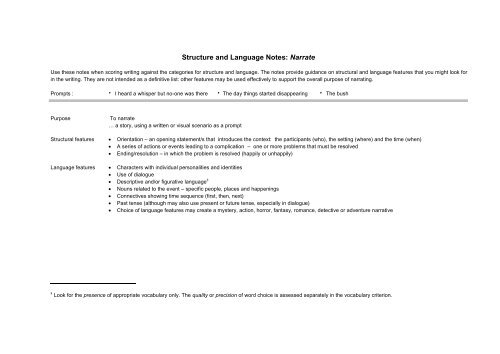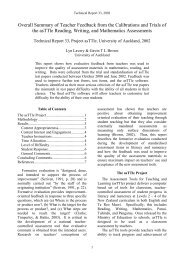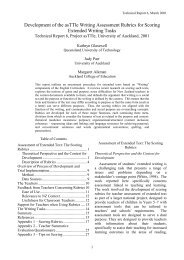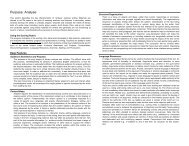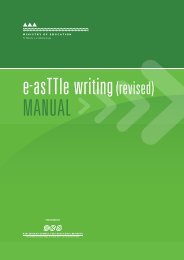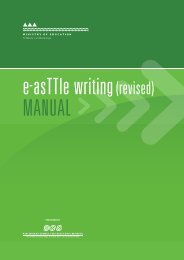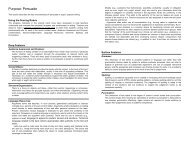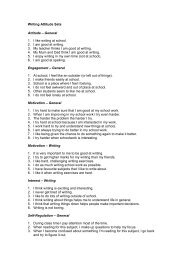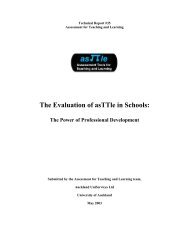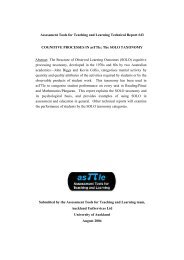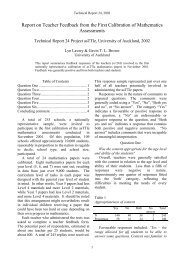Structure and Language notes to support the generic rubric - e-asTTle
Structure and Language notes to support the generic rubric - e-asTTle
Structure and Language notes to support the generic rubric - e-asTTle
You also want an ePaper? Increase the reach of your titles
YUMPU automatically turns print PDFs into web optimized ePapers that Google loves.
<strong>Structure</strong> <strong>and</strong> <strong>Language</strong> Notes: Narrate<br />
Use <strong>the</strong>se <strong>notes</strong> when scoring writing against <strong>the</strong> categories for structure <strong>and</strong> language. The <strong>notes</strong> provide guidance on structural <strong>and</strong> language features that you might look for<br />
in <strong>the</strong> writing. They are not intended as a definitive list: o<strong>the</strong>r features may be used effectively <strong>to</strong> <strong>support</strong> <strong>the</strong> overall purpose of narrating.<br />
Prompts : • I heard a whisper but no-one was <strong>the</strong>re • The day things started disappearing • The bush<br />
Purpose To narrate<br />
… a s<strong>to</strong>ry, using a written or visual scenario as a prompt<br />
Structural features Orientation – an opening statement/s that introduces <strong>the</strong> context: <strong>the</strong> participants (who), <strong>the</strong> setting (where) <strong>and</strong> <strong>the</strong> time (when)<br />
A series of actions or events leading <strong>to</strong> a complication – one or more problems that must be resolved<br />
Ending/resolution – in which <strong>the</strong> problem is resolved (happily or unhappily)<br />
<strong>Language</strong> features Characters with individual personalities <strong>and</strong> identities<br />
Use of dialogue<br />
Descriptive <strong>and</strong>/or figurative language 8<br />
<br />
<br />
<br />
<br />
Nouns related <strong>to</strong> <strong>the</strong> event – specific people, places <strong>and</strong> happenings<br />
Connectives showing time sequence (first, <strong>the</strong>n, next)<br />
Past tense (although may also use present or future tense, especially in dialogue)<br />
Choice of language features may create a mystery, action, horror, fantasy, romance, detective or adventure narrative<br />
8 Look for <strong>the</strong> presence of appropriate vocabulary only. The quality or precision of word choice is assessed separately in <strong>the</strong> vocabulary criterion.


